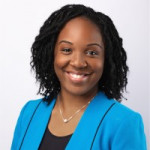Over the past several years, a heightened awareness around diversity, equity and inclusion (DEI) has led countless organizations to examine their operations, personnel and overall public relations and communications.
These efforts are to be commended, especially as DEI continues to be an integral part of what we do as communicators.
However, one factor that often gets overlooked is the words we use in our efforts. Before launching your next initiative, it’s critical that organizations ensure the words they use are impartial, and promote fairness and justice. Here are some tips to use as a guide:
Seek first to understand
Diversity statements are front and center on company websites. Social justice efforts are included in annual reports. And representation is a more meaningful part of the marketing conversation.
Yet, according to a recent report by the Institute for Public Relations, only 31% of communicators reported their organizations had formal definitions of DEI terms in a handbook or guide. That same study found that 20% reported that they did not recognize the difference between the terms “diversity” and “inclusion.”
How can organizations be successful if the teams in charge of communicating DEI initiatives don’t understand the language?!
The short answer? They can’t. Seek first to understand and you can naturally weave these efforts into the culture of your organization.
Lead with people
What’s equally as important as understanding the words is how we use them. Oftentimes when discussing marginalized groups, words and phrases often lead with the circumstance and not the individual, and defines a group by its challenges. For example, the phrases “the homeless” or “suffers from hearing loss” never takes into account that you are describing a person. A person with a name, a face, and a story beyond their challenges.
This type of language isn’t inclusive, and often leads to reinforcing negative stereotypes and perceptions. Instead, reframe the words to “person experiencing homeless” or “person who is hard of hearing,” which uses person-first language that humanizes the individual and/or group you’re describing.
Check your bias
How many times have we read a mission statement that says something along the lines of: “we are a voice to the voiceless” or “we help low-income families in need.…”
Again … cringe. The words used aren’t inherently harmful, but they certainly create a hierarchy that puts one group beneath the other.
Step Up—a nonprofit in Los Angeles, CA that serves teenage girls—uses an asset-based language guide to educate their external audiences about how to speak about their work. One of the most powerful excerpts in the piece is “We don’t assume there are needs, that the needs are all the same, or that we know how to meet them for every individual girl … we partner with each teen to help her know and max out her potential.”
The organization doesn’t ignore the circumstances and paint a rosy picture. They simply explain the problem in a way without mischaracterizing the individuals they serve.
Be specific
Earlier this month, Bernice King, the daughter of the late Dr. Martin Luther King Jr. and CEO of the King Center tweeted: “I don’t want to be ‘People of Color.’” The tweet garnered nearly 25,000 likes and thousands of comments in response – some in agreement, and others who feel the term unifies the shared experience of those who are non-white. Similar debate is had around the use of BIPOC (i.e., Black, indigenous, (and) people of color).
Communicators can navigate our ever-evolving language by asking questions and being specific. If you are writing about the Black experience, it’s okay to simply say Black. As someone of Caribbean descent, I first identify by my family’s country of origin vs African American. And at a recent event, a PR professional shared that she preferred Ecuadorian, vs. Hispanic or Latinx.
Part of inclusion is respecting each person or group’s identity, and we can’t assume to know it all by using an AP style guide.
One size does not fit all. And our words must reflect that reality.








